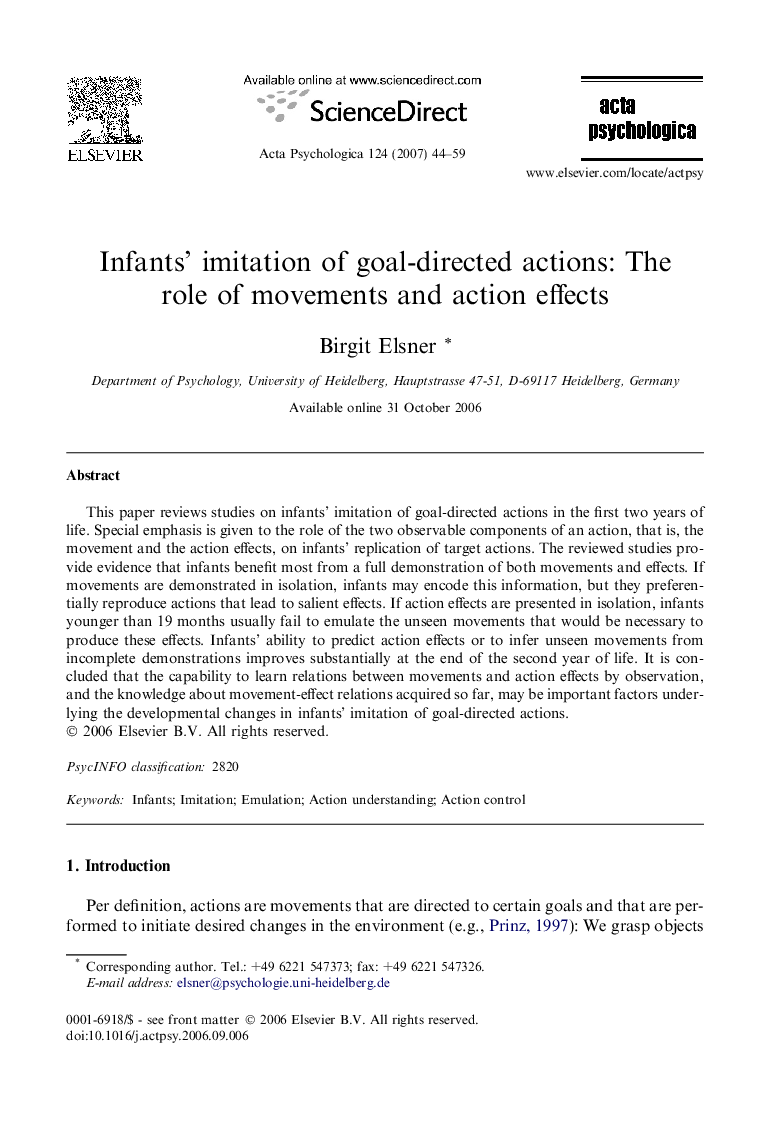| Article ID | Journal | Published Year | Pages | File Type |
|---|---|---|---|---|
| 920590 | Acta Psychologica | 2007 | 16 Pages |
This paper reviews studies on infants’ imitation of goal-directed actions in the first two years of life. Special emphasis is given to the role of the two observable components of an action, that is, the movement and the action effects, on infants’ replication of target actions. The reviewed studies provide evidence that infants benefit most from a full demonstration of both movements and effects. If movements are demonstrated in isolation, infants may encode this information, but they preferentially reproduce actions that lead to salient effects. If action effects are presented in isolation, infants younger than 19 months usually fail to emulate the unseen movements that would be necessary to produce these effects. Infants’ ability to predict action effects or to infer unseen movements from incomplete demonstrations improves substantially at the end of the second year of life. It is concluded that the capability to learn relations between movements and action effects by observation, and the knowledge about movement-effect relations acquired so far, may be important factors underlying the developmental changes in infants’ imitation of goal-directed actions.
